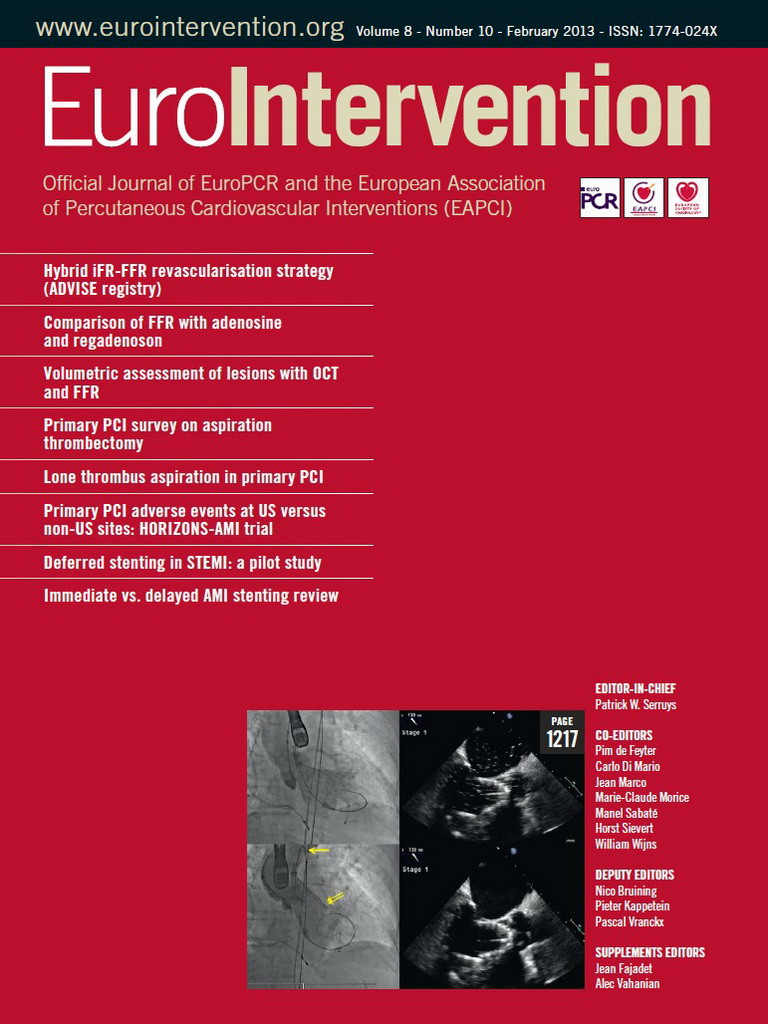I want to share with you this personal view, albeit extremely biased, on the history of revascularisation and acute myocardial infarction…a history that I saw unfold over the last decades.
In 1979 we invited Peter Rentrop, the pioneer of intracoronary streptokinase for acute MI to the Thorax Center in Rotterdam and soon after we started using this treatment for our patients. In 1981, the Rotterdam group, under the leadership of Désiré Collen, published an article in The Lancet on the use of tissue plasminogen activator (TPa) derived from melanoma cells to dissolve a venous thrombosis in the iliofemoral artery1. This was a frightening use of a bio-product at the time; and Leuven University together with GenenTech needed to create the recombinant TPa in order to achieve a large application. Two years later we published in the British Heart Journal one of the first reports on PCI post-thrombolysis with streptokinase2 –another report came from Jurgen Meyer– and in 1985, we reported the results in The Lancet of a randomised trial showing improved survival in patients presenting with acute myocardial infarction treated with early thrombolysis using either the intracoronary or intravenous routes3.
At the time, the very beginnings of what we can call the interventional era, interventional cardiologists strongly suggested combining recombinant tissue plasminogen activator (rTPa) and PTCA –percutaneous transluminal coronary angioplasty, as it was known then. This combination was clearly detrimental, and generated more trouble than the rTPA alone; so, for acute myocardial infarction in Rotterdam we decided to implement the application of intravenous rTPA alone, abandoning PTCA. I remained convinced, however, that PCI was indeed the appropriate approach in AMI4. Fortunately, two of my co-authors, Felix Zijlstra and Harry Suryapranata moved to Zwolle after their training at the Thorax Center creating the Zwolle School, which introduced primary PCI for AMI on a large scale…and I do not need to remind you how successful their story has become today5.
Following, as well, the example of Geoffrey Hartzler and William O’Neill, soon the whole world started to use PCI in AMI. We should always remember and acknowledge the work of the EAPCI and EuroPCR who have given their integral support to the “Stent for Life Initiative”, since it has been clearly demonstrated that this is a field where PCI is saving lives6. PCI in AMI became the flagship of intervention. It is again the Zwolle group which demonstrated an improved survival rate using thrombectomy plus PCI, although today this information is somewhat challenged and needs to be confirmed in a large outcome trial7.
One of the articles in the present edition raises the question of whether thrombectomy alone is enough8, and I am sure that this topic will keep us busy for some considerable time to come. It is also clear that aspiration thrombectomy could be replaced by mechanical thrombectomy – allowing us to extract the thrombus without either crossing the lesion or embolising the thrombus. This is exactly the nature of the discussion that we are seeing in this issue of our journal. Several articles in this current edition of EuroIntervention also explore and assess the quality of some of the different existing international primary PCI programmes9,10.
Coming “full circle”
I would like to draw your attention to a recent paper in Science where we see a cluster of nanospheres carrying TPa molecules directly to a specific site11. This is a, “…biomimetic strategy that uses high shear stress caused by vascular narrowing as a targeting mechanism –in the same way platelets do– to deliver drugs to obstructed blood vessels”. Using “microscale aggregates of nanoparticles” which “were fabricated to break up into nanoscale components when exposed to abnormally high fluid shear stress” allows for the release of the drug at the site of the thrombus, with the potential of achieving a dose reduction by a factor of 10011. This remarkable observation was quickly followed by an article with excellent illustrations in the New England Journal of Medicine12 as well as another in JACC, which published a paper by a Japanese group reporting results in experimental animal models13.
We really should watch the development of thrombolysis within the nanotechnology field.
It would be quite ironic if an intravenous treatment comes back into the picture alongside that of delayed PCI, since the negative aspect of thrombolysis has always been linked to the potential for haemorrhagic stroke, which can perhaps now be avoided when you have the possibility of using a dose reduced by a factor of 100.
Like this we could truly come “full circle”.

